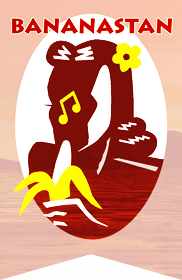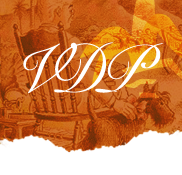The Day Van Dyke Parks Went Calypso...
by Denise Sullivan
![]()
 When 80,000 barrels of oil spilled into the waters of the
Santa Barbara Channel in January of 1969, the crudesplattered
water, beaches, and birds along the California
coast in its aftermath became the symbols of modern ecodisaster.
While the ensuing public outcry helped hasten the
formalization of the environmental movement as we now
know it, for musician Van Dyke Parks, the spill and "the
revelation of ecology," as he calls it, was a very personal,
life-altering occasion. "It changed my M.O. and changed my
very reason for being," he says. The Union Oil rig rupture in
Santa Barbara made Parks go calypso.
When 80,000 barrels of oil spilled into the waters of the
Santa Barbara Channel in January of 1969, the crudesplattered
water, beaches, and birds along the California
coast in its aftermath became the symbols of modern ecodisaster.
While the ensuing public outcry helped hasten the
formalization of the environmental movement as we now
know it, for musician Van Dyke Parks, the spill and "the
revelation of ecology," as he calls it, was a very personal,
life-altering occasion. "It changed my M.O. and changed my
very reason for being," he says. The Union Oil rig rupture in
Santa Barbara made Parks go calypso.
"When I saw the Esso Trinidad Steel band, I saw myself in a Trojan Horse," he says. "We were going to expose the oil industry. That's what my agenda was. I felt it was absolutely essential." From 1970 to 1975, Parks waged awareness of environmental and race matters through the music and culture of the West Indies, though in the end, "You don't know whether to laugh or cry. That's what makes Van Gogh go," he says, "That's what great art does." Though Parks is referring directly to Esso Trinidad's happy/sad steel drum sounds, he could just as easily be talking about his own experience during what we'll dub the Calypso Years.
Over a five-year period, Parks produced albums by the Esso Trinidad Steel Band (1971) and Bob Dylan favorite, the Mighty Sparrow (Hot and Sweet, 1974); he also recorded his own calypso-inspired works, Discover America (1972) and Clang of the Yankee Reaper (1976). Born from his passion for popular song and launched at a time when grassroots protest was at an all-time high, Parks had every reason to believe calypso consciousness would prevail. But he hadn't factored in the complications of taking on big oil, nor of touring the US with a 28-man steel drum corps from the Caribbean. He was unable to predict that the sessions with Mighty Sparrow would be fraught with rage, and that his efforts would earn him the enmity of Bob Marley, whose production requests he ignored in favor of calypso. And yet, you get the feeling he'd agree in one hot minute to do it all over again the exact same way if given a chance to revisit this section of his checkered recording history.
Parks is generally a well-mannered and affable Southern-born gent with a mildly mischievous streak. A one-time child prodigy on clarinet, he's often mentioned in tandem with his Southern California work with Beach Boy Brian Wilson, who was reportedly too tripped-out to continue their Smile-era collaborations. A formidable freethinker and raconteur of psychedelic dimensions himself, you can hear the Parks imprint, curly-cuing through 'Heroes and Villains' and 'Sail On, Sailor'; songs that made a lasting impression on the Beach Boys sound. Rarely at a loss for bookings as a composer, arranger, musician, and producer (Parks would go on to work with artists from Harry Nilsson and Ringo Starr to Joanna Newsom and Rufus Wainwright), his song 'High Coin' traded freely on the hippie covers market while he juggled sessions by psychedelic bands as well as singer-songwriters Randy Newman and Phil Ochs.
It was following the critical success of his first solo work, Song Cycle, in 1968 and the oil spill in '69, that Parks began in earnest his pursuit of the music of the West Indies — specifically calypso and steel drum (also known as steel pan). Initially played on instruments made from clankity household odds and ends, by the '40s, steel drums were made from a surplus of oil barrels, washed ashore the islands of Trinidad and Tobago from the coast of Venezuela. "America pollutes its environment with oil: Little Trinidad makes beautiful music from the drums that you throwaway," says pan player Godfrey Clarke in the Esso liner notes.
Serving as the accompaniment to Carnival (for which Trinidad is world-famous), calypso is also often accompanied by lyrically potent verses that alternately use breezy and nasty humor to signify its weighty concerns: Imperial oppression and the extreme poverty of the islands. Ideally, the counterculture audience could've dug this political/party music with its motives to create equality and earthly harmony. Surely younger folks could identify with the calypsonian struggle, more than say, Liberace's audience in Las Vegas, which is where Parks found the Esso Trinidad Tripoli Steel Band working in the late '60s. "I saw them as enslaved in their relationship to Liberace; I thought it was a vulgarity. I wanted to save them from their trivialization." What had begun as Parks' desire to popularize calypso at that point became his crusade.
The Land of the Hummingbird.
"I just love that performance of 'Aquarium'," Parks says of Esso's album finale. "You see, it represents that eco-consciousness that the album should project. I'm just telling you why I did it: I devoted the album to Prince Bernhard, who was the head of the World Wildlife Association. Everything was directed to making it a proper, political, green album." Nearly 40 years later, the Bananastan label has issued newly-minted versions of the Parks-produced Esso and Sparrow's Hot and Sweet. Not only are the calypsos strangely contemporary, I find I'm deeply moved by Esso's environmentally-tuned music from the island officially nicknamed the Land of the Hummingbird. When Parks suggests we meet beside the Santa Monica Bay, I agree: There is no better place than under the sun for a talk about his rarely-discussed calypso intermezzo. "This has been a well-kept secret," he begins with a whisper. "The promotion men were successful at that."
Parks' devotion to calypso puts him in the unique position of serving as the music's chief 21st century stateside ambassador; as it is, his relationship to calypso predates his own childhood and runs in the family. According to Parks, his mother's uncle was the founder of the University of Miami and a calypso devotee. "Of course, they were touched by calypso down there. He had been to Trinidad at the same time as FDR," explains Parks. President Franklin Delano Roosevelt's 1936 trip to Trinidad, documented in the song 'FDR in Trinidad', is among the first calypso standards. By the 1940s, 'Rum and Coca-Cola', as sung by the Andrews Sisters, had brought calypso music to the American masses. "Of course, everyone was aware of 'Rum and Coca-Cola', which was incidentally my mother's favorite drink," says Parks. Though, everyone was not necessarily aware that the jolly little song was also a critique of American military presence in Trinidad (nor would it be a truly great calypso without the double edge). But the Andrews Sisters' vocal stylings would soon be outdone by authentic calypsonian Harry Belafonte's '50s success with the Jamaican folk song 'Day-O (The Banana Boat Song)', calypso's most enduring hit. In the early '60s, Parks recalls he and his brother were "left in the dirt" on a bill they shared with calypso's Andrew "Pan" de la Bastide.
But it is in the music's details rather than its broad overview where Parks gleans inspiration: The origins of the intensity of the music, the unparalleled musicianship of the pan players, the wordplay of the singers and their emotional extremes — from treachery to triumph — are the elements of interest to Parks.
First published on www.crawdaddy.com on November 19, 2009.


